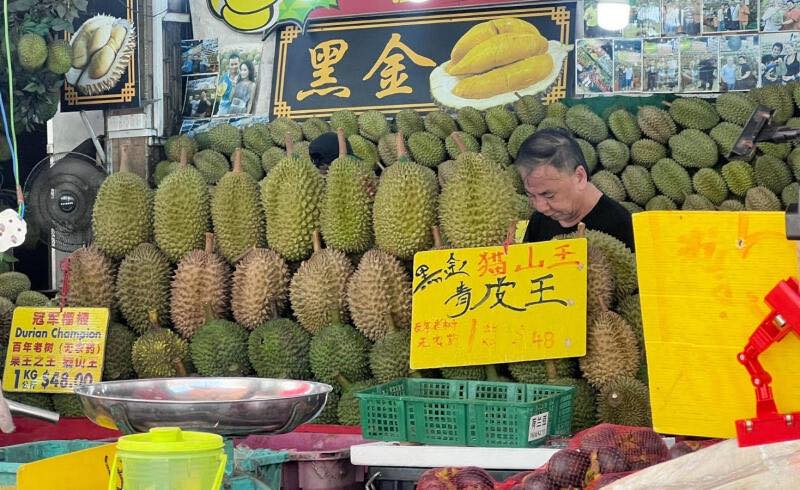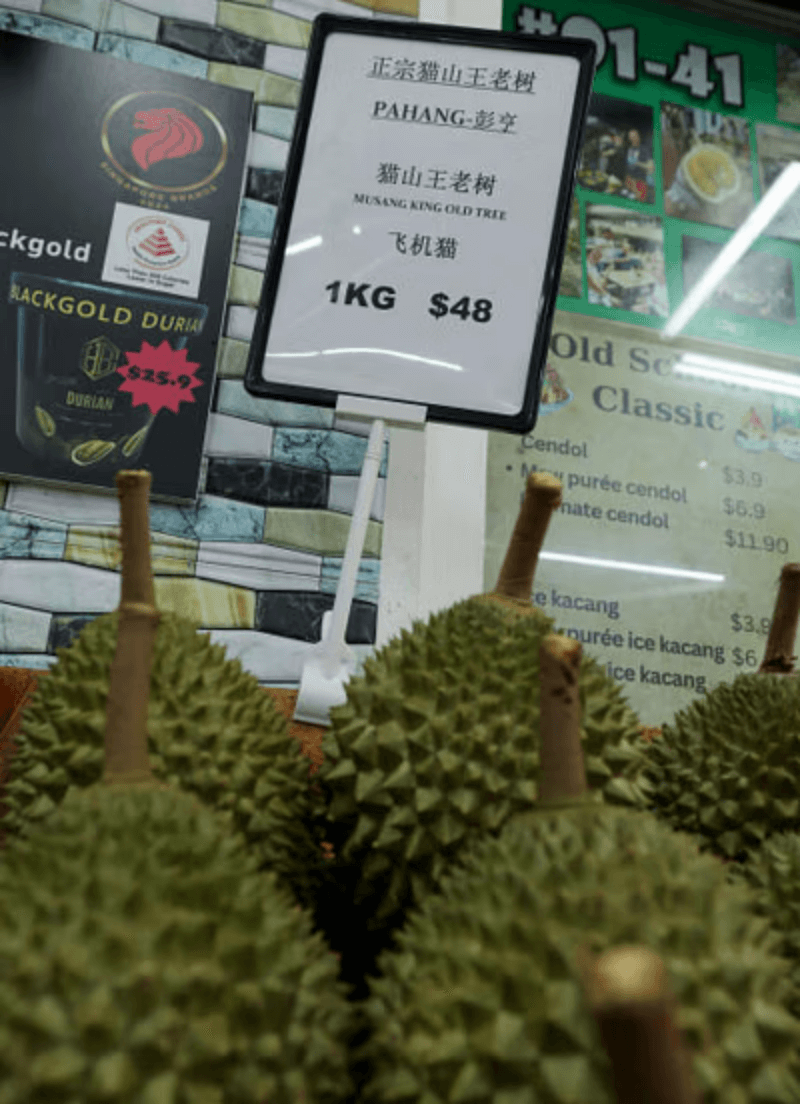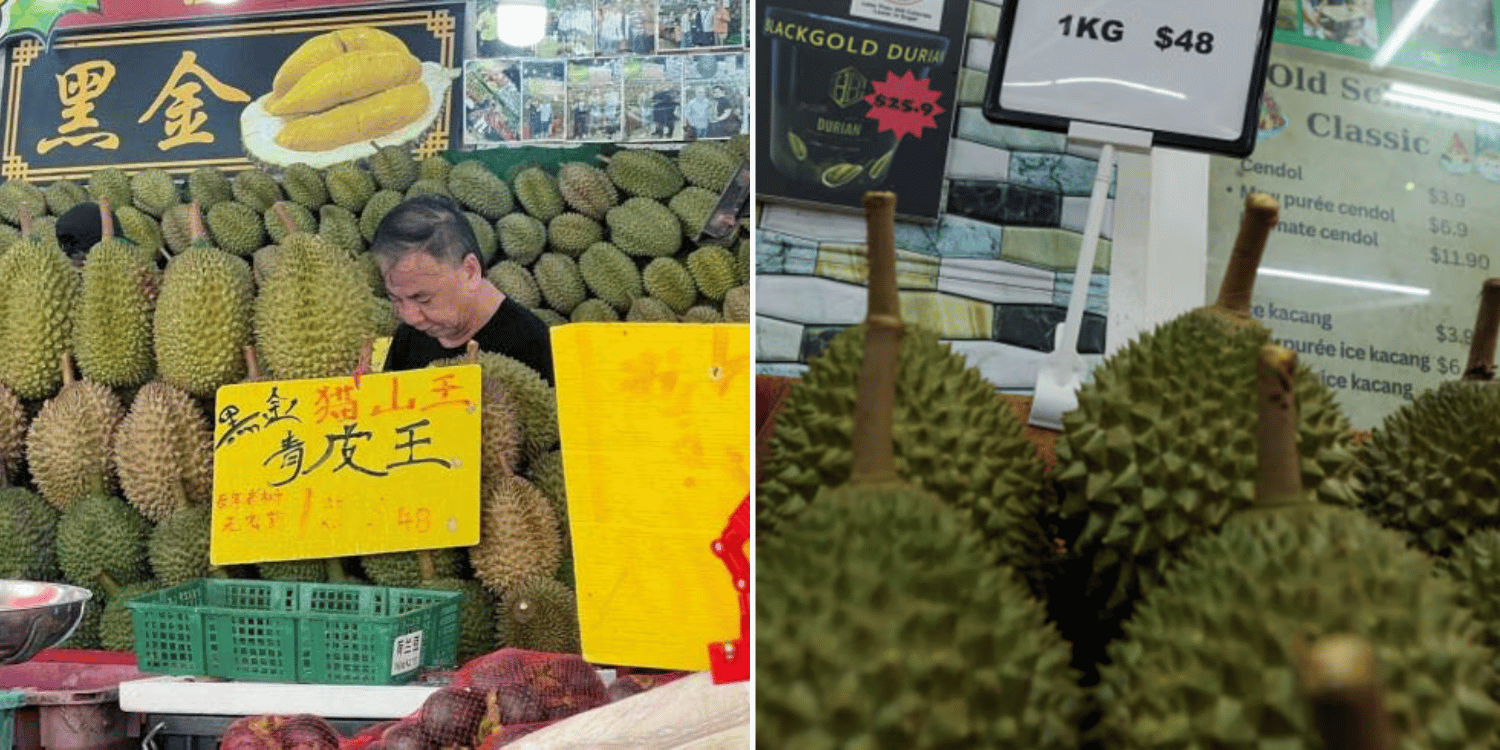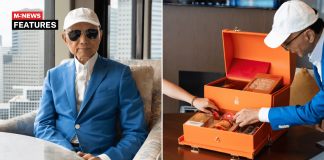Durians in Singapore are being sold at S$48 to S$58 per kilogram, high prices shock customers
Would you shell out almost S$60 for a kilogram of durian? Because that’s what you’ll have to fork out for the ‘Tupai King’ durian at a fruit stall in Chinatown.

Source: Shin Min Daily News
More purportedly ultra-rare varieties of the divisive king of fruits have surfaced in Geylang, sparking debate among customers due to their exorbitant prices.
While some find these prices outrageous, others believe they are worth it.
‘Green Skin King’ & ‘Black Gold’ durians priced at up to S$58/kg in Geylang
Shin Min Daily News readers alerted the Chinese paper to the emergence of intriguing new durian varieties in Singapore — along with their eye-popping price tags.
Sure enough, when reporters visited fruit stalls in the Geylang area, they discovered ‘Green Skin King’ and ‘Black Gold’ durians commanding a hefty price range of S$48 to S$58 per kilogram.
These varieties were marketed as “champion” durians, seemingly to justify their premium pricing.

Source: Shin Min Daily News on Facebook
Similarly, another fruit stall along Trengganu Street in Chinatown was found selling ‘Tupai King’ durians at S$58 per kilogram.
The shopkeeper explained that due to its rarity, supply is limited, justifying the steep cost.
However, he acknowledged that taste preferences vary, cautioning that high prices don’t guarantee universal appeal.
He also noted that most customers at the stall are tourists.
Export-quality Musang King durians priced at S$48 per kg
Meanwhile, Shin Min Daily News also came across ‘Fei Ji Mao’ durians at a stall on Upper Cross Street.
These were going at S$48 per kilogram.

Source: Shin Min Daily News
Stall owner Zhang Chaosheng (transliterated from Mandarin) explained that these durians are part of the prized Musang King variety and that they grow on old trees at high altitudes.
Their unique name comes from their extensive export history to places like Hong Kong and China before being introduced to Singapore.
“These are Musang King durians that have ‘sat on a plane and flown overseas’,” Mr. Zhang said.
‘Fei Ji’ translates to ‘plane’ in Mandarin, while ‘Mao’ originates from ‘Mao Shan Wang’, the Chinese name for Musang King.
Mr Zhang emphasised that these are Grade A fruits sourced from the fertile soils of the Raub district in Pahang, Malaysia.
“Since they are exported to foreign countries, they are considered the best of the best,” he concluded.
Some customers think high prices of durians are worth it
Customers that Shin Min Daily News spoke to expressed varied opinions on whether the steep prices justified the purchase.
A couple tried durians in Singapore for the first time and found them more delicious compared to those in China.
They spent S$40 on what they believed to be Musang King durians.
“It may seem expensive, but considering the portion, taste, and texture, it’s worth it,” remarked the woman, 32-year-old Ms Ye.
She noted that in China, even average-quality durians can fetch 250 yuan (S$47).
Fruit stall vendors confirmed that some customers are willing to splurge on ‘Tupai King’ durians at S$58 a kilo. However, others are taken aback by the high price.
Also read: FairPrice durian fair returns from 14 June, fruits priced from S$1.95
FairPrice durian fair returns from 14 June, fruits priced from S$1.95
Have news you must share? Get in touch with us via email at news@mustsharenews.com.
Featured image adapted from Shin Min Daily News on Facebook and Shin Min Daily News.









